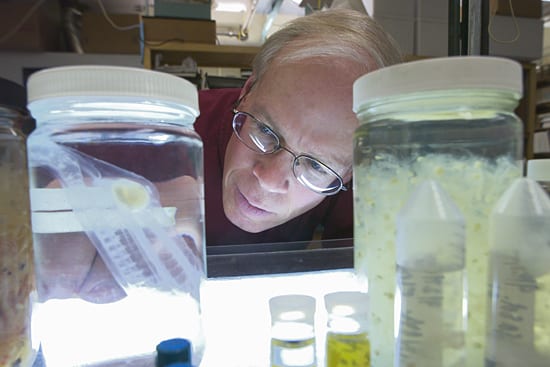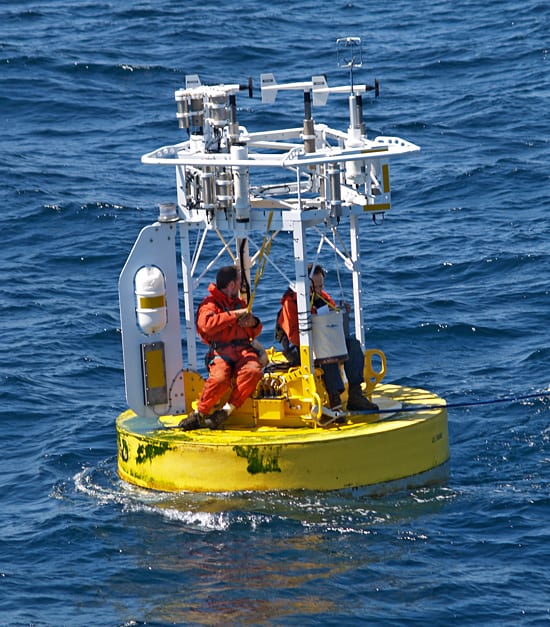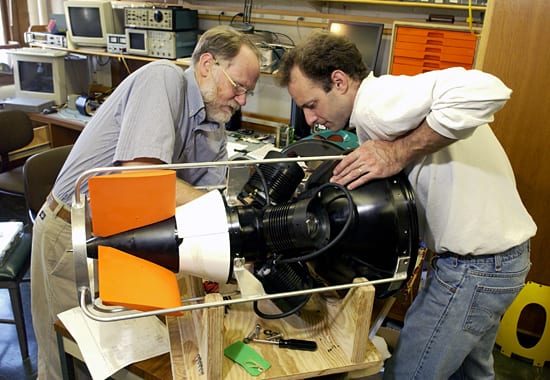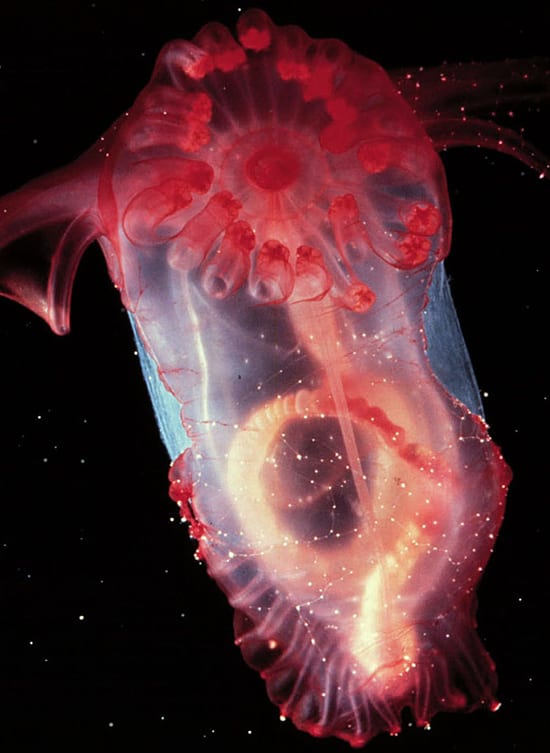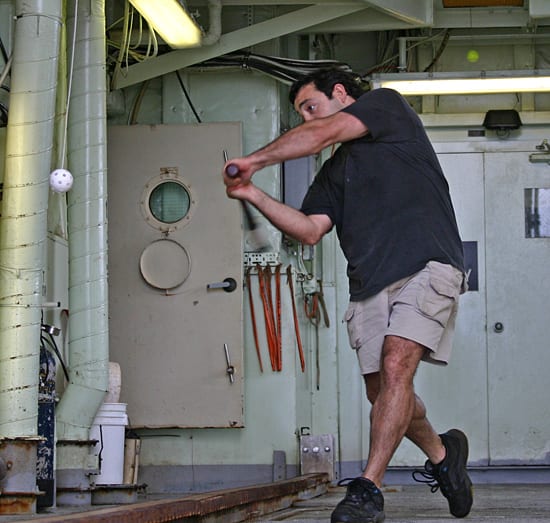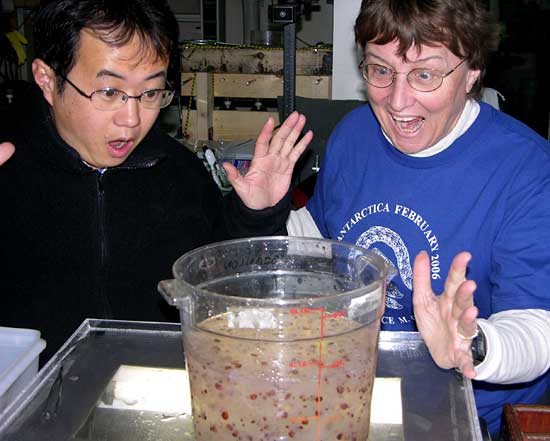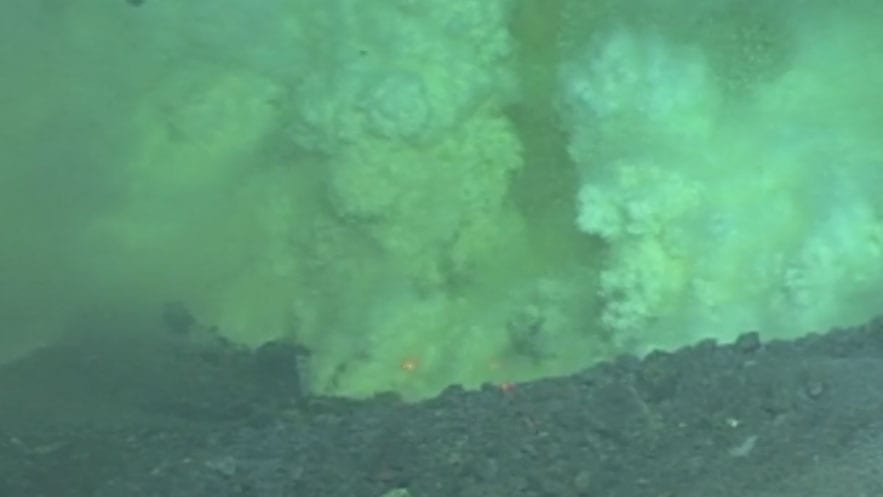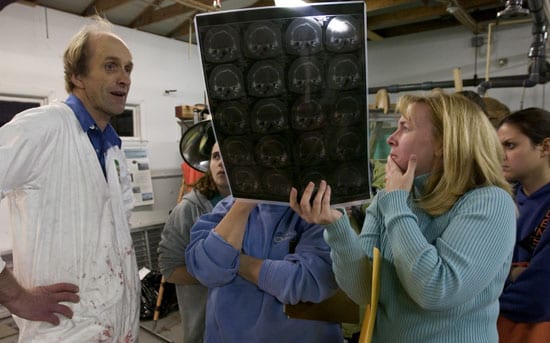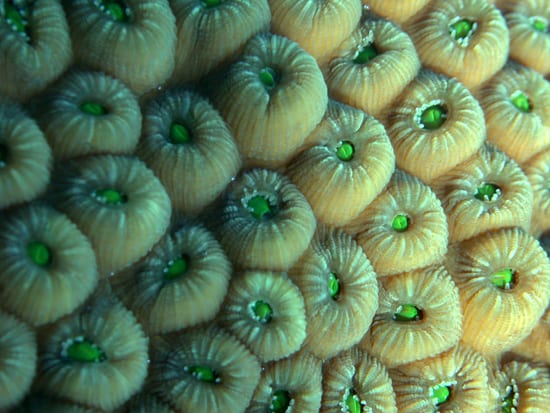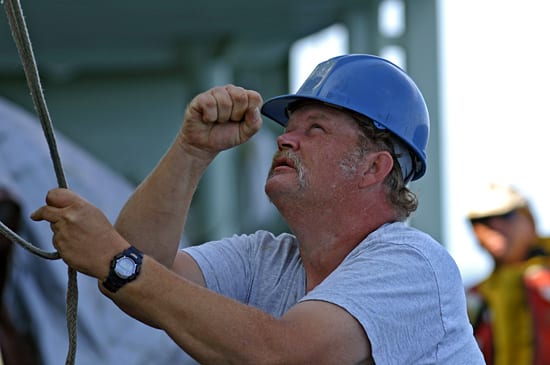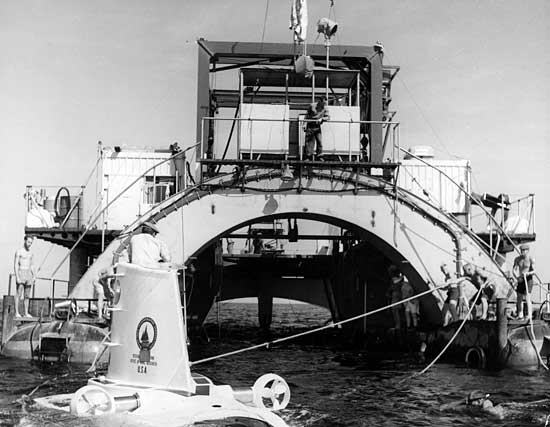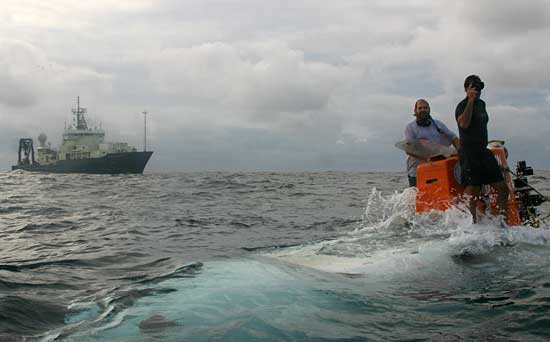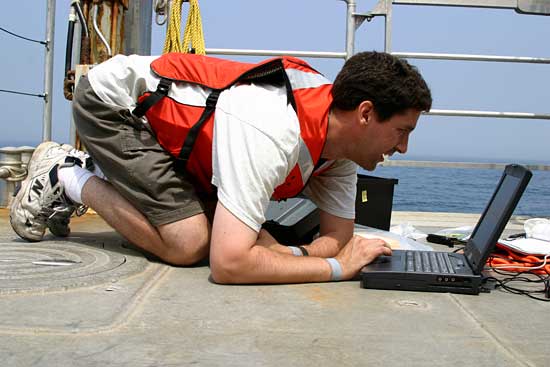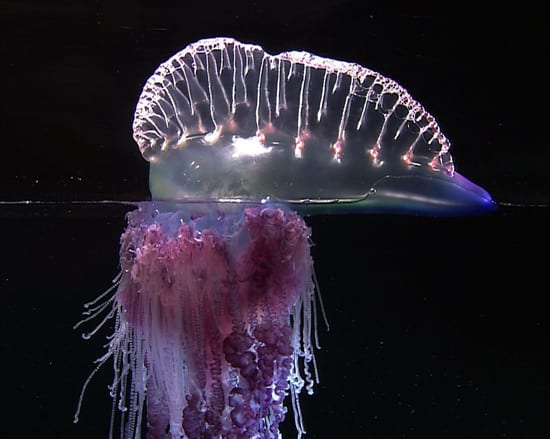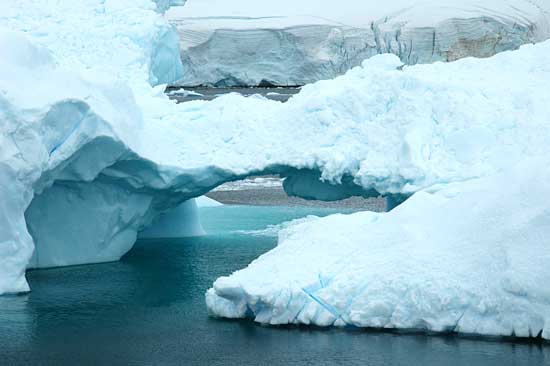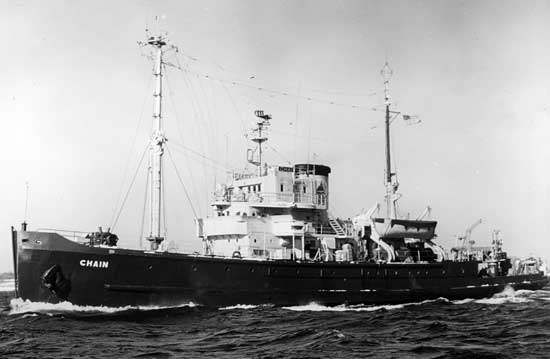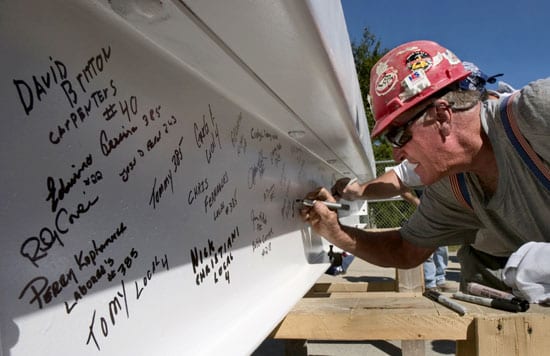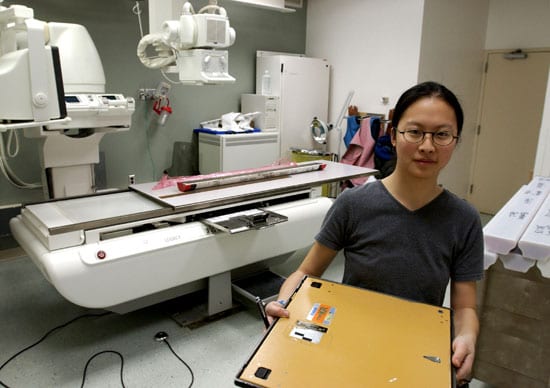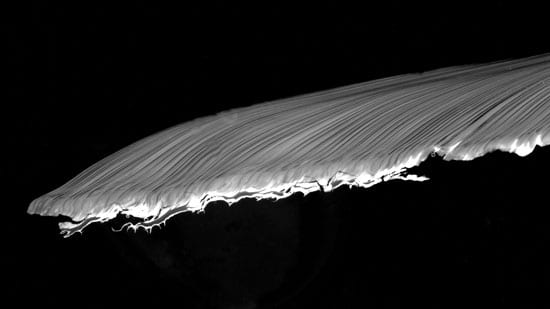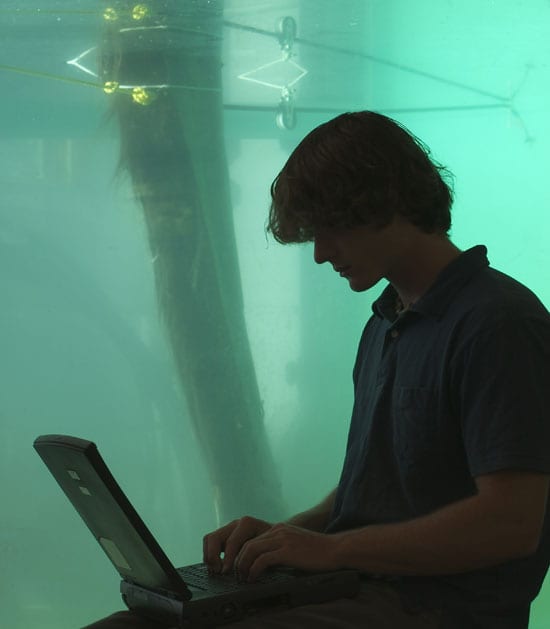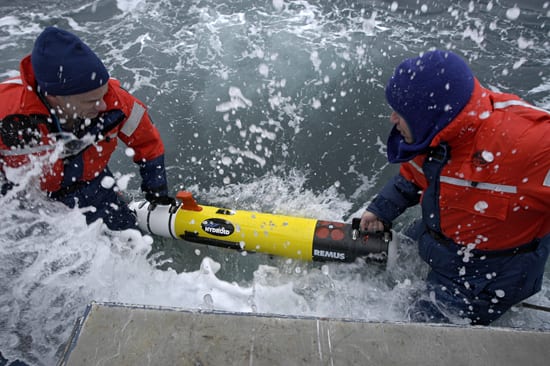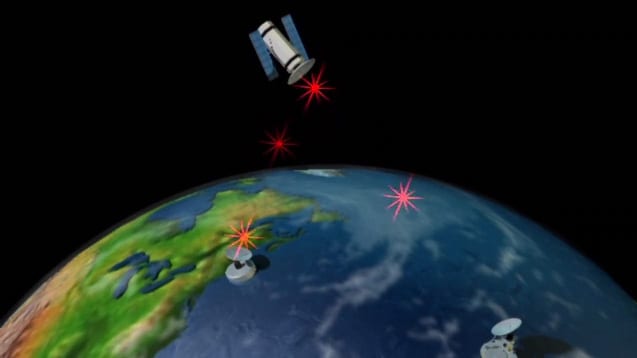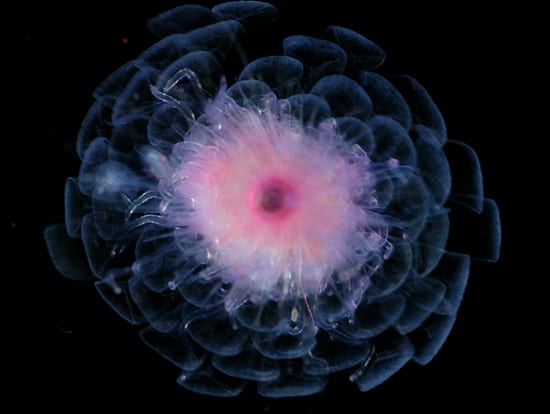Multimedia Items
Jars of Jellies
Biologist Larry Madin studies jellies, collected at sea and preserved in jars, in his lab. Gelantinous zooplankton (jellyfish to most of us), are a major link in the oceanic food…
Read MoreRepairs at Sea
Technicians repaired meteorological sensors, damaged by a ship strike, on a Gulf Stream buoy in April. The buoy is the first surface mooring in deep water to survive the wind,…
Read MoreEasy Does It
Rob Goldsborough and Greg Packard work on a specialized REMUS. Digital still cameras with lights were installed on the autonomous underwater vehicle to find cracks on the inside of an aqueduct supplying…
Read MorePretty in Pink
The sea-dwelling sea cucumber, Enypniastes eximia, feeds on sand and mud, then swims gracefully off the bottom, perhaps to avoid predators. (Photo by Laurence Madin, Woods Hole Ocenographic Institution)
Read MoreBatter Up!
DSV Alvin pilot Anthony Tarantino takes a whack at a Whiffle ball during some rare down time aboard the R/V Atlantis. (Photo by Amy Nevala, Woods Hole Oceanographic Institution)
Read MoreWe Got ‘Em!
Biologists Jun Nishikawa from the University of Tokyo and Patricia Kremer from the University of Connecticut react with exaggerated delight to finding nearly 13 liters of their target animals, salps,…
Read MoreJason versus the Volcano
WHOI expedition leader Will Sellers talks about the adventure of deep-sea research at an erupting underwater volcano.
Read MoreTime for a Dunk
Al Bradley (left) and Dana Yoerger, two of the inventors of the Autonomous Benthic Explorer (ABE), dunked the autonomous underwater vehicle in the test well at the WHOI dock before…
Read MoreIt’s All in the Image
Marine biologist Michael Moore and CT Technician Julie Arruda discuss CT images of a marine mammal with students. A new necropsy and scanner facility enhance the team’s ability to handle…
Read MoreConnect the Dots
Polyps of the star coral, montrastrea cavernosa, with a green algae at its center, used as a source of food. Star coral are common in the tropical Atlantic Ocean and…
Read MoreStop!
Research vessel Atlantis Bosun Wayne Bailey signals to a crew member during ship operations for the Galápagos Rift Expedition in May and June 2005. Crew members work closely with scientists…
Read MorePiece by Piece
Early image of the catamaran Lulu, the first support ship for the submersible Alvin (in foreground), circa 1964. The 105-foot Lulu was built in Woods Hole from surplus minesweeping pontoons and…
Read MoreAll in a Day’s Work
The submersible Alvin surfaces after a dive as support vessel Atlantis moves into position for recovery. A typical dive is 8-10 hours. Alvin has made more than 5,000 dives since…
Read MoreFollow That Fin
WHOI biologist Mark Baumgartner enters data from a variety of ocean instruments and tools into his laptop during a 2005 cruise off Cape Cod to investigate where and how whales…
Read MoreBeautiful but Dangerous
Physalia physalis, commonly known as the Portuguese man-of-war or bluebottle, lives in warm waters worldwide and is famous for its painful stinging tentacles up to 50 meters (165 feet) long.…
Read MoreOver and Under
A late-summer iceberg, sculpted by wind and waves into an ice bridge, drifts in the Lemaire Channel on the west coast of the Antarctic peninsula. (Photo by Katherine Madin, Woods…
Read MoreResearch Vessel Chain
R/V Chain sailed in the WHOI fleet from 1958 to 1975, when it was retired. Formerly a Navy salvage ship during World War II, Chain was converted in 1958 for oceanographic research.…
Read MoreSign Here, Please
A steel worker signs a ceremonial construction beam for one of the new laboratories on WHOI’s Quissett Campus. State-of-the-art laboratory facilities formarine research and biogeochemistry were completed in late 2005. (Photo…
Read MoreTaking A Closer Look
MIT/WHOI Joint Program student Mea Cook images a sediment core with an X-ray. (Photo by Tom Kleindinst, Woods Hole Oceanographic Institution)
Read MoreWhat’s in a Shell?
A thin section of a quahog shell reveals annual growth bands, like tree rings, which are valuable for climate change studies. (Photo by Tom Kleindinst, Woods Hole Oceanographic Institution)
Read MorePoolside Science
2005 Summer Student Fellow Derek Cavatorta works on a laptop in front of a test tank, where different types of rope are being tested to help disentangle right whales from fishing gear. (Photo…
Read MoreAwash
Al Plueddemann and Glen Gawarkiewicz prepare to launch REMUS, an autonomous underwater vehicle, from R/V Tioga during a survey in shallow water off Chatham, Mass., in early 2006. (Photo by…
Read MoreHow Does an Observatory Work?
Sensors at mid-ocean ridges detect lava flows, ground motion, and vent chemicals, sending data to shore for real-time research and robotic exploration.
Read MoreOne in a Million
This specimen of Athorybia, a siphonophore or colonial jellyfish, was collected recently from a Census of Marine Zooplankton cruise off the U.S. East Coast. Researchers found many new species in water…
Read More
